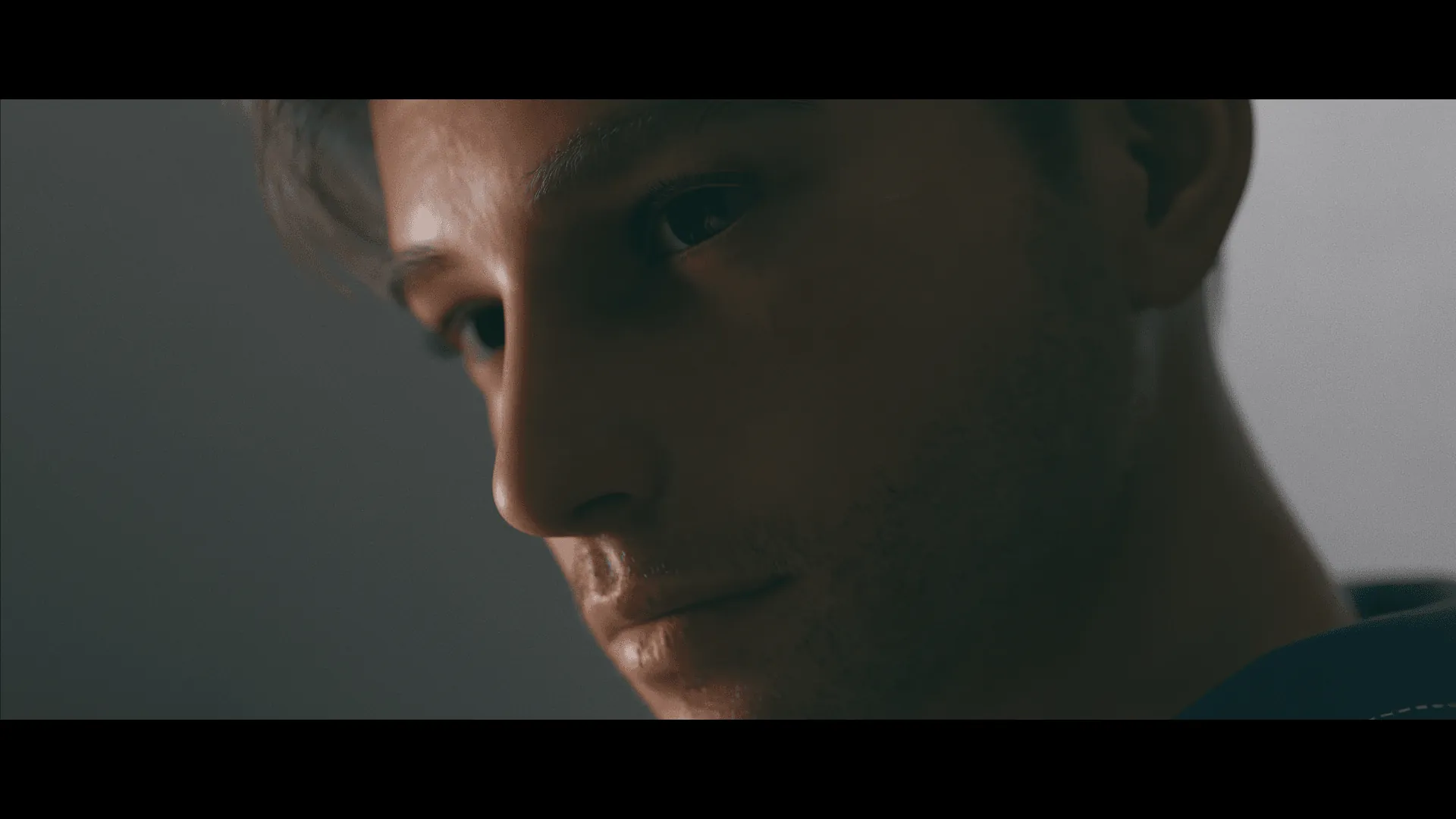
Leaving DNA
Play Leaving DNA
Leaving DNA review
Explore the Story, Gameplay, and Unique Features of Leaving DNA
Leaving DNA is a compelling adult visual novel that combines dark, emotional storytelling with mature themes and intricate character development. Centered around a criminal prosecutor entangled in a cold case linked to his father’s military past, the game challenges players with complex decisions and immersive narrative depth. This article explores the key aspects of Leaving DNA, from its storyline and gameplay mechanics to its unique features and player experience, providing a comprehensive guide for those interested in this distinctive title.
Unpacking the Story and Themes of Leaving DNA
Ever found yourself scrolling through endless game libraries, feeling like nothing truly grapples with the heavy stuff? You know, the kind of story that sticks with you for days, making you question your own morals? That was me, until I downloaded Leaving DNA. I went in expecting a standard mystery, but what I got was a profound exploration of legacy, guilt, and the grey areas of justice that left me genuinely moved. This isn’t just another title in the adult visual novel genre; it’s a masterclass in emotional depth and narrative craftsmanship. 😮🤔
Let’s pull back the curtain and dive into the heart of this unforgettable experience.
What Is the Core Narrative of Leaving DNA?
At its heart, the Leaving DNA story is a gripping cold case investigation that brilliantly blends the personal with the professional. You step into the polished shoes of Adrian, a sharp but weary criminal prosecutor. His latest assignment seems straightforward at first: reinvestigate the decades-old murder of a young woman. The twist? The prime suspects are the surviving members of his own estranged father’s elite military unit. 🕵️♂️⚖️
This setup is the engine of the entire Leaving DNA plot analysis. It’s not just about finding a killer; it’s a journey into Adrian’s own fractured history. Every clue he uncovers in the present forces him to confront ghosts from his past, primarily his complicated and distant relationship with his father. The game masterfully uses the adult visual novel story format to let you live Adrian’s dual life—building a legal case by day and wrestling with personal demons by night. The “DNA” in the title is a clever double entendre, referring both to the biological evidence that might crack the case and the inescapable family legacy he carries within him.
Tip: Pay close attention to your dialogue choices with Adrian’s mother. These quiet moments often reveal the most about the family’s hidden trauma and are key to understanding his motivations.
The brilliance of this Leaving DNA story is how it makes you, the player, feel the weight of every decision. You’re not just clicking through text; you’re actively piecing together a puzzle where the final picture could shatter a family, a reputation, or a man’s very soul.
How Does Leaving DNA Handle Mature and Dark Themes?
Let’s be frank—this game earns its mature rating. But unlike some titles that use sensitive content for shock value, Leaving DNA integrates its mature themes with purpose and gravity. The narrative doesn’t shy away from depicting tragedy, the psychological scars of military service, and the corrosive nature of long-held secrets. 😥
The game’s handling of these Leaving DNA mature themes is what elevates it. A graphic scene is never just a graphic scene; it’s a narrative tool used to illustrate the brutal reality of a situation or the profound brokenness of a character. For instance, exploring the themes of justice is central. The game constantly asks: Is legal justice the same as true justice? Can a person be a hero in one context and a monster in another? These are the uncomfortable questions at the core of the Leaving DNA narrative themes.
Here is a breakdown of how key themes are presented:
| Theme | How It’s Explored | Emotional Impact |
|---|---|---|
| Personal Tragedy | Through flashbacks and character confessions about loss and regret. | Creates a deep sense of empathy and shared sorrow. |
| Moral Ambiguity | Presented via dialogue choices where no option feels completely “right.” | Makes the player complicit and deeply thoughtful about their actions. |
| The Burden of Legacy | Adrian’s struggle to escape or understand his father’s shadow. | Drives the personal, relatable core of the mystery. |
I remember one pivotal scene where Adrian confronts a veteran from his father’s unit. The conversation starts professionally, but as Adrian pushes, the man’s polished facade crumbles, revealing a torrent of guilt and PTSD. It’s a raw, uncomfortable, and brilliantly written moment that doesn’t feel exploitative. Instead, it serves the Leaving DNA emotional depth, making you understand that everyone in this story is a victim of the past in their own way. This thoughtful approach is a hallmark of a superior adult visual novel story.
What Makes the Characters and Plot Engaging?
The magic of Leaving DNA isn’t just in its clever plot—it’s in the people who inhabit it. The Leaving DNA characters are not mere archetypes; they are beautifully flawed, complex individuals whose motivations are as murky as the case itself. You don’t just investigate them; you get to know them, and in doing so, the line between suspect and sympathetic figure constantly blurs. 🎭✨
Adrian himself is a fantastic protagonist. He’s competent and driven, but also carries a palpable sense of loneliness and a desperate need for closure. Your choices shape his temperament, allowing you to decide if he’s a relentless seeker of truth or a man being consumed by his obsession. The supporting cast is equally compelling. From the seemingly stoic unit commander to the victim’s family, who are still grieving after all these years, every character feels real and essential.
What makes the Leaving DNA plot so engaging is its perfect pacing. The game expertly doles out revelations, ensuring you’re always hungry for the next clue. Just when you think you’ve figured it out, a new piece of evidence or a character’s unexpected confession turns everything on its head. This is where the Leaving DNA narrative themes of truth and perception truly shine. You begin to question everyone’s testimony, including Adrian’s own interpretations of events.
The Leaving DNA characters drive the plot forward through their interactions. Key moments that showcase this include:
* The First Reunion: The tense, awkward dinner where Adrian first meets the suspects as a group. The subtext in every line of dialogue is thick enough to cut with a knife.
* A Break in the Case: Finding a piece of evidence that doesn’t fit the official narrative, forcing you to reconsider everything you thought you knew about the victim.
* The Final Confrontation: A climactic scene where all the carefully built tension erupts, and you must use everything you’ve learned to navigate the outcome.
Ultimately, the Leaving DNA story succeeds because it makes you care. You’re not a detached observer; you’re in the trenches with Adrian, feeling his frustration, his breakthroughs, and his emotional turmoil. The game proves that an adult visual novel story can be both intellectually stimulating and deeply human, leaving its own unique mark on you long after the credits roll. 💙
Leaving DNA offers a richly woven narrative experience that challenges players with meaningful choices and mature themes. Its unique blend of emotional storytelling, engaging gameplay mechanics, and polished technical presentation makes it a standout title in the adult visual novel genre. Whether you are drawn to its complex characters or the immersive atmosphere, Leaving DNA invites you to explore a story that lingers long after the game ends. Dive in today to uncover the many layers of this compelling visual novel.















